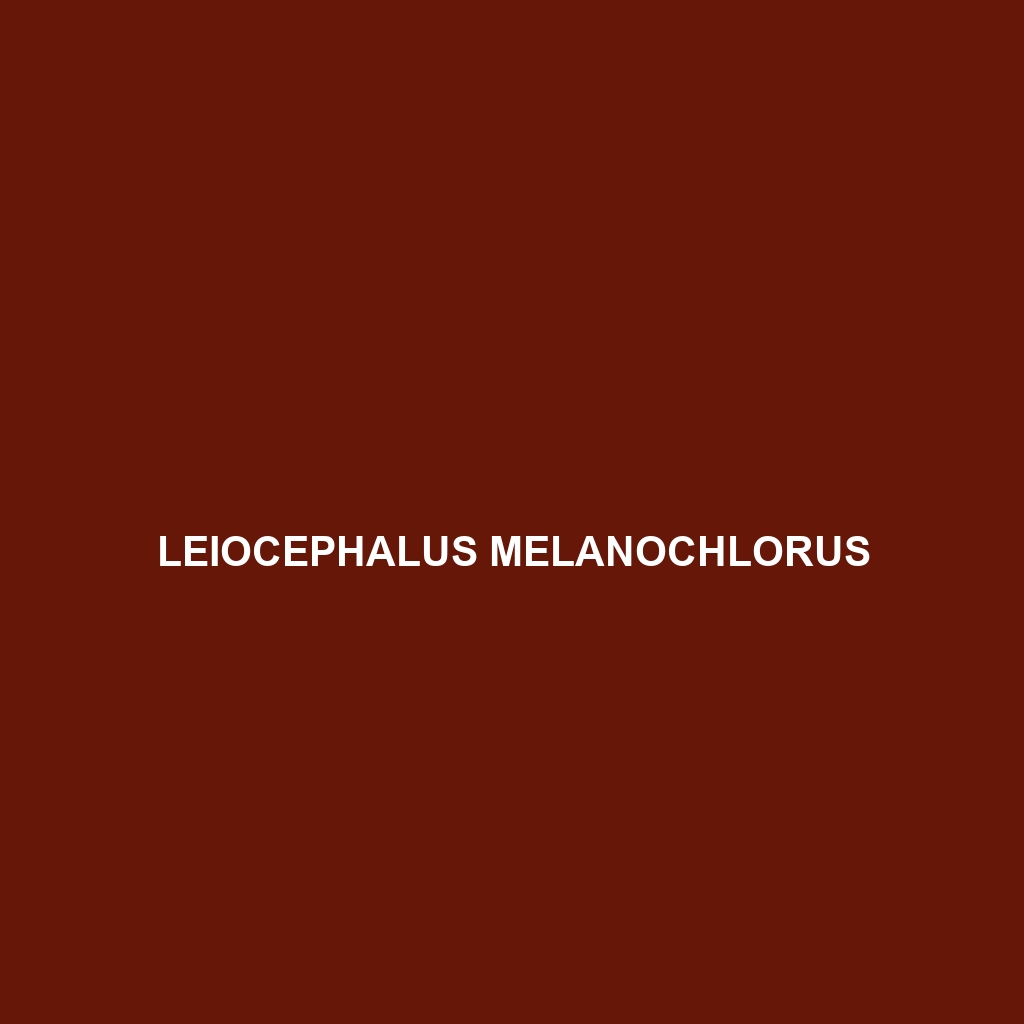Common Name
Leiocephalus melanochlorus
Scientific Name
Leiocephalus melanochlorus
Habitat
Leiocephalus melanochlorus, commonly known as the black-green curlytail lizard, is primarily found in a variety of habitats across the Caribbean, notably in the Bahamas, Turks and Caicos Islands, and parts of Cuba. This species thrives in rainforests, savannas, and coastal areas where it can hide among the underbrush and rocky crevices. The black-green curlytail lizard prefers coastal ecosystems with well-drained sandy soils and abundant vegetation. These lizards flourish in warm, tropical climates, making them well-adapted to the humid conditions typical of their native regions. Given their preference for sunny locations, these lizards are often found basking on rocks or other sunlit areas, absorbing heat to maintain their body temperature.
Physical Characteristics
The Leiocephalus melanochlorus exhibits a distinctive appearance that sets it apart from other species. Typically, they range from 10 to 14 inches in total length, with a robust body and a characteristic curly tail that contributes to their name. Their coloration is a striking mix of black and green, providing excellent camouflage against the lush vegetation of their habitat. The dorsal side of the lizard features intricate patterns of scales, which may vary in color intensity. One of their unique features is the ability to change color slightly in response to temperature and lighting, enhancing their adaptive camouflage.
Behavior
The behavior of Leiocephalus melanochlorus is marked by various adaptations that facilitate their survival in the wild. These lizards are primarily diurnal, allowing them to hunt and bask in the sun during the day. During the mating season, which typically occurs in the warmer months, males engage in territorial displays, showcasing their vibrant colors and performing push-up movements to attract females. Social interactions among these lizards can involve a range of vocalizations, typically characterized by a series of clicks or hisses. Interestingly, Leiocephalus melanochlorus is known for its quick bursts of speed when threatened, enabling them to dart into the nearest underbrush or crevice to evade potential predators.
Diet
The black-green curlytail lizard is primarily an insectivore, feeding on a variety of small insects and arthropods, such as beetles, crickets, and ants. Occasionally, they may consume plant material, making them omnivorous in their dietary habits. Their feeding patterns are influenced by environmental conditions, as they primarily hunt during the day, using their keen eyesight to spot prey. They employ an ambush strategy, waiting patiently for their prey to come close before making a quick and decisive attack.
Reproduction
Leiocephalus melanochlorus has a unique reproductive cycle, typically starting with the mating season during the warmer months. After a brief courtship display, the female lays clutches of 3 to 10 eggs, which she buries in sandy environments to provide optimal conditions for incubation. The gestation period lasts about 60 to 90 days, after which hatchlings emerge ready to fend for themselves. Maternal care is minimal; however, the young lizards exhibit rapid growth and coloration development, which helps them blend into their environment and evade predation effectively.
Conservation Status
The conservation status of Leiocephalus melanochlorus is currently classified as Least Concern according to the IUCN Red List, indicating that this species does not face immediate threats of extinction. Nonetheless, habitat destruction due to human development and invasive species poses significant challenges to their populations. Conservation efforts focus on habitat preservation and monitoring populations to mitigate potential threats in their natural environments.
Interesting Facts
One fascinating aspect of Leiocephalus melanochlorus is its unique ability to store fat in its tail, which can serve as an energy reserve during periods of food scarcity. Additionally, these lizards are known for their impressive agility, allowing them to climb vertical surfaces and leap significant distances to escape predators. Unlike many other reptiles, the black-green curlytail lizard has been observed employing complex social behaviors that suggest a level of social structure within their populations.
Role in Ecosystem
Leiocephalus melanochlorus plays a vital role in its ecosystem as both a predator and prey. As an insectivore, it helps control insect populations, contributing to ecological balance. Additionally, these lizards are a food source for larger predators, including birds of prey and mammals, thus integrating them into the food web. Their presence indicates a healthy ecosystem, where they interact with various other species, including those of plants and insects, thereby contributing to biodiversity.
